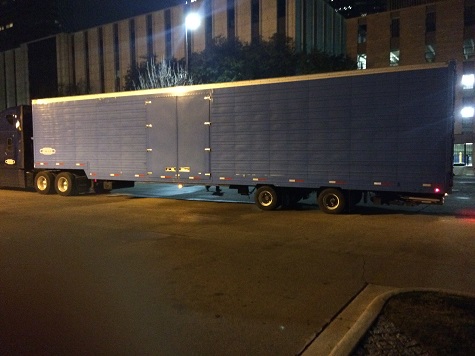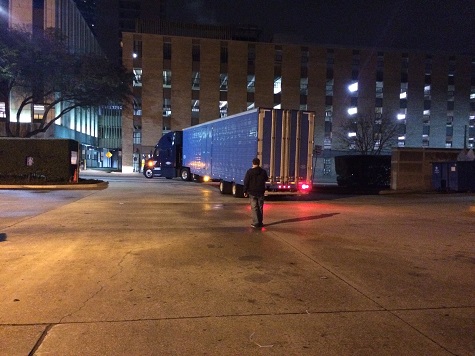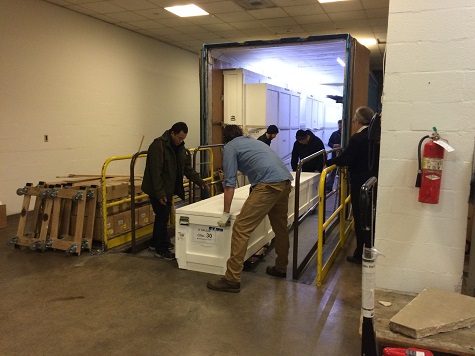Eight months ago, I joined the Dallas Museum of Art as the Director of Collections Management, helping to oversee the care of our art collection—both on and off the walls in our galleries and for our special exhibitions. As part of that responsibility, I supervise the Museum’s team of preparators and registrars. Preparators are the staff who actually handle the art and are responsible for installing the artwork you see hanging in the galleries. Registrars, among other duties, are in charge of all logistics and coordination of loans coming to the DMA. Members of our excellent team have written about their adventures on Uncrated before (relive some of those stories here, here, here, here, and here!).
Last month we were all focused on the arrival of paintings from around the globe for our newest special exhibition, Between Action and the Unknown: The Art of Kazuo Shiraga and Sadamasa Motonaga.
Art travels in specially built crates, and there are particular companies that coordinate the shipping and customs procedures for works of art. The DMA Registrar staff works in close contact with these companies to make sure the works are safe and sound at all times. They know what size crate can fit in the cargo hold of different aircrafts and all possible flight options. We are kind of the travel agent for the artwork! We know that if a crate is higher than 63 inches it means that it will need to fly in a cargo plane.
That was the case for some of the most amazing artwork you will see in Between Action and the Unknown: The Art of Kazuo Shiraga and Sadamasa Motonaga, which opens at the DMA on February 8. We had 30 crates of 52 works of art travel from Japan to Dallas accompanied by the staff from the Japan Foundation and couriers from two of the lending institutions, the Mie Prefectural Art Museum, and the Hyogo Prefectural Museum of Art.

As there is no need to cater to passengers, cargo flights tend to leave and arrive at not the most convenient times. They are likely to arrive in the middle of the night—or in the middle of the morning, depending on how you look at it!
The Shiraga and Motonaga works arrived at the DMA on a cold January night. Registrar and Preparator staff, armed with lots of coffee, good attitudes, and heavy coats, were at the DMA to receive the shipment. Our galleries were dark, and so was the night outside. Under the watchful eyes of our Security staff, we worked just as we would during the day, moving quickly and carefully. Preparators unloaded the big truck and moved the crates into our galleries. There they would acclimatize—a museum term for adjust to the current conditions (sort of like getting over jet lag)—for a 24-hour period. Afterward, these beautiful works were uncrated and installed in the presence of their couriers.
I hope you will visit the DMA soon and enjoy this stunning exhibition!
Isabel Stauffer is the Director of Collections Management at the DMA.


